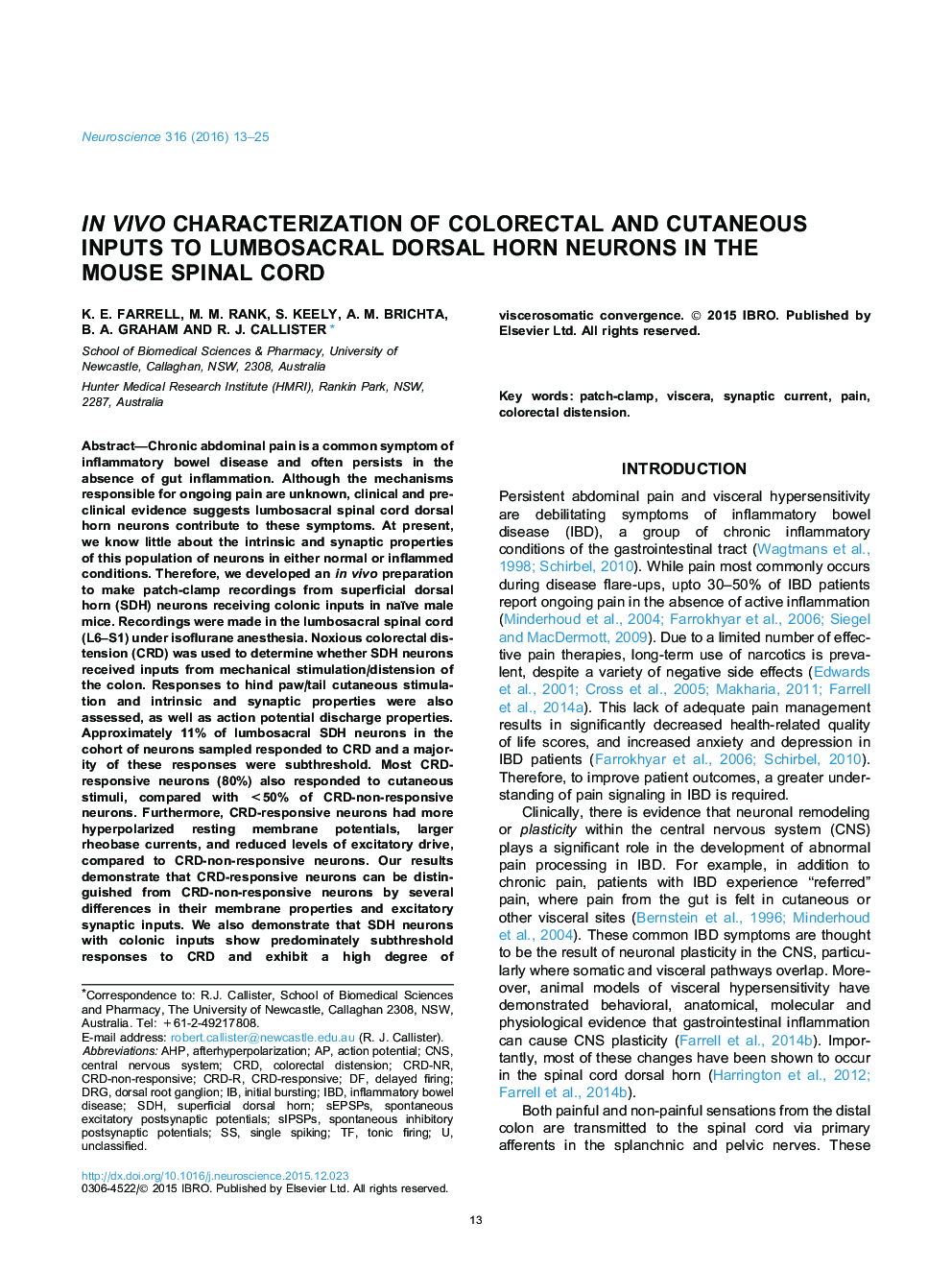| کد مقاله | کد نشریه | سال انتشار | مقاله انگلیسی | نسخه تمام متن |
|---|---|---|---|---|
| 6271458 | 1614760 | 2016 | 13 صفحه PDF | دانلود رایگان |
- In vivo patch clamp was used to study the functional properties of mouse spinal neurons that receive inputs from the colon.
- Colorectal distension was used to identify colon-responsive neurons.
- Colon-responsive neurons showed predominately subthreshold responses to colorectal distension.
- Most colon-responsive neurons had cutaneous receptive fields.
- The intrinsic and synaptic properties of colon-responsive and non-responsive neurons differed.
Chronic abdominal pain is a common symptom of inflammatory bowel disease and often persists in the absence of gut inflammation. Although the mechanisms responsible for ongoing pain are unknown, clinical and preclinical evidence suggests lumbosacral spinal cord dorsal horn neurons contribute to these symptoms. At present, we know little about the intrinsic and synaptic properties of this population of neurons in either normal or inflammed conditions. Therefore, we developed an in vivo preparation to make patch-clamp recordings from superficial dorsal horn (SDH) neurons receiving colonic inputs in naïve male mice. Recordings were made in the lumbosacral spinal cord (L6-S1) under isoflurane anesthesia. Noxious colorectal distension (CRD) was used to determine whether SDH neurons received inputs from mechanical stimulation/distension of the colon. Responses to hind paw/tail cutaneous stimulation and intrinsic and synaptic properties were also assessed, as well as action potential discharge properties. Approximately 11% of lumbosacral SDH neurons in the cohort of neurons sampled responded to CRD and a majority of these responses were subthreshold. Most CRD-responsive neurons (80%) also responded to cutaneous stimuli, compared with <50% of CRD-non-responsive neurons. Furthermore, CRD-responsive neurons had more hyperpolarized resting membrane potentials, larger rheobase currents, and reduced levels of excitatory drive, compared to CRD-non-responsive neurons. Our results demonstrate that CRD-responsive neurons can be distinguished from CRD-non-responsive neurons by several differences in their membrane properties and excitatory synaptic inputs. We also demonstrate that SDH neurons with colonic inputs show predominately subthreshold responses to CRD and exhibit a high degree of viscerosomatic convergence.
Journal: Neuroscience - Volume 316, 1 March 2016, Pages 13-25
